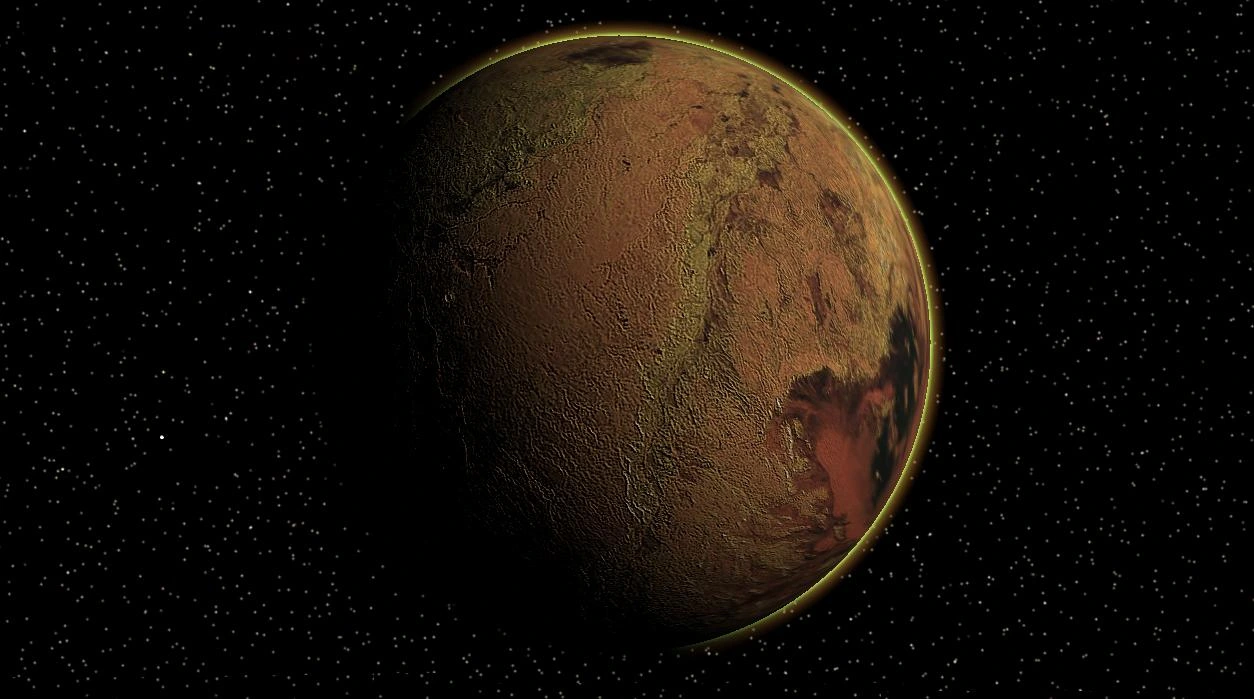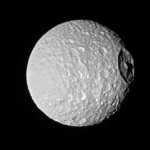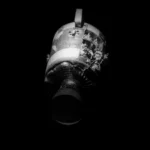
Welcome to our exploration of Proxima Centauri b, a fascinating exoplanet that has captured the attention of astronomers and space enthusiasts alike. As the closest known planet to our solar system, Proxima Centauri b orbits the red dwarf star Proxima Centauri, located just over 4 light-years away from Earth. This intriguing world offers a unique glimpse into the possibilities of habitability beyond our own planet. In this blog, we will delve into 25 captivating facts that shed light on Proxima Centauri b’s characteristics, its discovery, and its potential for supporting life. Whether you’re a seasoned astrophysicist or simply curious about the cosmos, join us on this journey to uncover the wonders of our nearest planetary neighbor!
Proxima Centauri b is an exoplanet that orbits the star Proxima Centauri. Exoplanets are planets located outside our solar system, and Proxima Centauri b is one of the most studied due to its proximity to Earth. It orbits Proxima Centauri, which is part of the Alpha Centauri star system, the closest star system to our own. The discovery of Proxima Centauri b has provided astronomers with a unique opportunity to study a potentially habitable world relatively close to us, sparking interest in the search for life beyond our planet.
Proxima Centauri is the closest known star to the Sun, located about 4.24 light-years away. This distance makes Proxima Centauri the nearest stellar neighbor to our solar system. A light-year, the distance light travels in one year, is approximately 5.88 trillion miles (9.46 trillion kilometers), meaning Proxima Centauri is about 24.9 trillion miles (40.1 trillion kilometers) away from Earth. This proximity allows astronomers to study the star and its planets in greater detail than more distant stars, enhancing our understanding of stellar evolution and planetary formation.
Proxima Centauri b was discovered in 2016 by astronomers using the radial velocity method. The radial velocity method detects exoplanets by measuring the wobble of a star caused by the gravitational pull of an orbiting planet. This method involves observing shifts in the star’s spectral lines due to the Doppler effect. The discovery of Proxima Centauri b was significant because it demonstrated that even small stars like red dwarfs could host potentially habitable planets, contributing to the growing catalog of exoplanets that might support life.
The planet has a mass of at least 1.17 times that of Earth, classifying it as a potentially rocky planet. The mass of Proxima Centauri b suggests it is likely a terrestrial planet, similar to Earth, rather than a gas giant. This classification is important because rocky planets are more likely to have solid surfaces and the potential for complex chemistry necessary for life. The mass also implies that Proxima Centauri b could have a similar composition to Earth, which raises intriguing possibilities regarding its geology and the potential for an atmosphere.
Proxima Centauri b orbits within the habitable zone of its star, where conditions might be suitable for liquid water. The habitable zone, often referred to as the “Goldilocks zone,” is the region around a star where temperatures are just right for liquid water to exist on a planet’s surface. For Proxima Centauri b, this zone is much closer to its star than Earth’s distance from the Sun, due to Proxima Centauri being a cooler star. The presence of liquid water is a key factor in the search for extraterrestrial life, as it is essential for all known forms of life.
The orbital period of Proxima Centauri b is approximately 11.2 Earth days. This short orbital period means that Proxima Centauri b completes a full orbit around its host star much faster than Earth, which takes 365 days. Due to this rapid orbit, the planet experiences a different seasonal cycle compared to Earth. The close proximity to its star also means that Proxima Centauri b receives more intense radiation, which could affect its atmospheric conditions and potential habitability.
Proxima Centauri is a red dwarf star, which is smaller and cooler than our Sun. Red dwarfs like Proxima Centauri are the most common type of star in the universe. They have lower masses (about 12% that of the Sun) and temperatures, resulting in a longer lifespan compared to larger stars. Proxima Centauri’s cooler temperature means it emits less light, which is why its habitable zone is much closer than that of the Sun. The stability of red dwarfs, combined with their longevity, makes them intriguing targets for the search for habitable planets.
The temperature on Proxima Centauri b could allow for liquid water, depending on its atmospheric conditions. While the planet is located in the habitable zone, the actual surface temperature depends on whether it has a substantial atmosphere to retain heat. If Proxima Centauri b has a thick atmosphere, it could maintain temperatures that allow for liquid water. However, if it lacks an atmosphere, the temperature could fluctuate dramatically, making it less likely to support life. Understanding the atmospheric composition is crucial for assessing its habitability.
Proxima Centauri b is tidally locked, meaning one side always faces its star while the other side remains in darkness. Tidal locking occurs when a planet’s rotation period matches its orbital period, leading to one hemisphere being perpetually exposed to the star and the other in constant darkness. This phenomenon can create extreme temperature differences between the two sides. The side facing Proxima Centauri could be very hot, potentially leading to harsh conditions, while the dark side could be extremely cold. This unique configuration may impact weather patterns and climate on the planet, potentially creating a zone of habitability at the terminator line—the area between the light and dark sides—where temperatures might be more moderate and suitable for supporting life.
The star Proxima Centauri emits a significant amount of stellar flares, which could impact the planet’s atmosphere. Stellar flares are sudden bursts of radiation from a star’s surface, often associated with magnetic activity. Proxima Centauri, being a red dwarf, is known to have frequent and intense flares. These flares can release high-energy particles that may strip away a planet’s atmosphere over time, especially if the planet is close to the star, as Proxima Centauri b is. The impact of these flares on Proxima Centauri b’s potential atmosphere is a significant factor in assessing its habitability, as a stable atmosphere is crucial for maintaining liquid water and supporting life.
Proxima Centauri b is part of a three-star system known as Alpha Centauri, which includes Alpha Centauri A and B. The Alpha Centauri system is the closest star system to our own, consisting of three stars: Proxima Centauri, Alpha Centauri A, and Alpha Centauri B. Alpha Centauri A and B form a binary pair and are more similar to our Sun in terms of size and brightness. The presence of multiple stars in this system creates a complex gravitational environment that can influence the orbits of planets, including Proxima Centauri b, making it an interesting subject for studying planetary dynamics and potential habitability in multi-star systems.
The planet was named after its host star, Proxima Centauri, which means “nearest center” in Latin. The name “Proxima Centauri” reflects its status as the closest star to the Sun. The term “Proxima” translates to “nearest,” while “Centauri” refers to the constellation Centaurus, where the star is located. This naming convention highlights the significance of Proxima Centauri in the context of astronomical studies and the search for potentially habitable planets, as it provides a nearby target for exploration and observation.
Proxima Centauri b is approximately 1.5 times closer to its star than Earth is to the Sun. The distance between Proxima Centauri b and its host star is about 0.0485 astronomical units (AU), whereas Earth is about 1 AU from the Sun. This close proximity allows Proxima Centauri b to receive a significant amount of stellar radiation, which influences its temperature and potential atmospheric conditions. The shorter distance to its star also means that Proxima Centauri b has a much shorter orbital period, completing a full orbit in just 11.2 Earth days.
The planet’s surface conditions are still unknown, and its atmosphere has not been confirmed. Despite its classification as a potentially habitable exoplanet, there is currently no direct evidence of Proxima Centauri b’s surface conditions or atmospheric composition. Scientists are actively researching the planet to determine whether it has an atmosphere capable of supporting liquid water. The lack of definitive data makes it challenging to assess its habitability, and future observations and missions may be necessary to gather more information about its environment.
Proxima Centauri b is one of the most Earth-like exoplanets discovered to date. With its location in the habitable zone and rocky mass, Proxima Centauri b has garnered significant interest as a candidate for hosting life. Its Earth-like qualities, such as size and potential for liquid water, make it a prime target for further study. Researchers are particularly interested in understanding whether it possesses an atmosphere and what conditions might exist on its surface, as these factors are critical for determining its habitability.
The discovery of Proxima Centauri b has sparked interest in the search for extraterrestrial life. The potential for life on Proxima Centauri b, given its location in the habitable zone, has led to increased interest in astrobiology and the search for extraterrestrial intelligence (SETI). The planet’s proximity to Earth makes it an appealing target for future missions and telescopic observations, as scientists aim to explore the conditions necessary for life and the possibility of finding biosignatures or other indicators of life.
The planet is located in the constellation Centaurus. Centaurus is a prominent constellation in the southern sky, known for containing the Alpha Centauri star system and other notable objects. It is one of the largest constellations and is visible from many parts of the world. The location of Proxima Centauri b within this constellation emphasizes its significance in the field of astronomy and the ongoing exploration of nearby star systems.
Proxima Centauri b’s discovery was made by a team of astronomers led by Guillem Anglada-Escudé. The discovery was part of a larger effort to find exoplanets around nearby stars. Anglada-Escudé and his team utilized data from the European Southern Observatory’s HARPS spectrograph to detect the planet’s presence through its gravitational influence on Proxima Centauri. This groundbreaking discovery marked a significant milestone in exoplanet research and highlighted the capabilities of modern astronomical techniques.
Mass of Proxima Centauri: Proxima Centauri, the closest known star to the Sun, has a mass approximately 12% that of our Sun. This makes it a red dwarf star, which is significantly smaller and cooler than our Sun. Red dwarfs are the most common type of star in the Milky Way galaxy, and their low mass results in a longer lifespan compared to larger stars. Proxima Centauri’s low luminosity means that it emits less energy, which affects the habitable zones around it and the conditions on orbiting planets like Proxima Centauri b.
Presence of Proxima Centauri c: Proxima Centauri b is not the only planet in its system; it has at least one more candidate planet, known as Proxima Centauri c. This planet was detected through indirect methods, similar to those used for Proxima Centauri b, and is believed to be more massive than Earth. The presence of multiple planets in the Proxima Centauri system provides an exciting opportunity for scientists to study the dynamics of planetary formation and the potential for habitability in systems dominated by red dwarf stars.
Habitability Debate: The potential for habitability of Proxima Centauri b remains a subject of ongoing research and debate among scientists. Factors such as its distance from Proxima Centauri, which is about 0.0485 AU, and the star’s variable luminosity play crucial roles in determining whether conditions could support liquid water on its surface. Additionally, the planet’s atmosphere, if it exists, and its ability to shield against stellar radiation are critical aspects that researchers are investigating to ascertain whether Proxima Centauri b could harbor life.
Detection Method: Proxima Centauri b was detected using the HARPS (High Accuracy Radial velocity Planet Searcher) spectrograph at the La Silla Observatory in Chile. This advanced instrument measures the minute wobbles in a star’s position caused by the gravitational pull of orbiting planets. The precision of HARPS enables astronomers to identify exoplanets by observing the Doppler shifts in the star’s light spectrum, allowing for the detection of even small, Earth-sized planets in the habitable zone of their stars.
Planetary Radius: The radius of Proxima Centauri b is estimated to be about 1.3 times that of Earth. This size suggests that the planet could be rocky, similar to Earth, rather than gaseous like Jupiter or Saturn. The slightly larger radius may also imply a greater gravitational pull, which could affect the planet’s atmosphere and surface conditions. Understanding the planet’s size and composition is essential for evaluating its potential for supporting life.
Distance from Proxima Centauri: Proxima Centauri b orbits its star at an average distance of about 0.0485 AU (astronomical units), which is much closer than Earth’s distance from the Sun (1 AU). This proximity places Proxima Centauri b within the star’s habitable zone, where temperatures could allow for liquid water to exist. However, being so close to a red dwarf also means the planet is likely subjected to intense stellar flares and radiation, which could impact its atmosphere and habitability.
Understanding Planetary Systems: The study of Proxima Centauri b contributes significantly to our understanding of planetary systems around red dwarf stars. These stars are known to host a variety of planets, and studying Proxima Centauri b and its companions helps astronomers learn about the formation and evolution of such systems. Insights gained from this research can inform our knowledge of exoplanets in general, particularly those that may be located in the habitable zones of their stars, which is crucial for the search for extraterrestrial life.
FAQs about Proxima Centauri b
Proxima Centauri b is the closest exoplanet to Earth, orbiting the nearest star to our Sun, Proxima Centauri. This proximity makes it a prime target for scientific study and fuels public curiosity. Here are some frequently asked questions about this fascinating exoplanet:
1. What is Proxima Centauri b?
Proxima Centauri b is an exoplanet, meaning a planet that orbits a star other than our Sun. It’s special because it’s the closest exoplanet to Earth, located in the habitable zone of its star, Proxima Centauri.
2. Where is Proxima Centauri b located?
Proxima Centauri b orbits Proxima Centauri, a red dwarf star that is the closest star to our Sun. It’s about 4.2 light-years away from Earth in the constellation Centaurus.
3. What is the size and mass of Proxima Centauri b?
Proxima Centauri b is a “super-Earth,” meaning it’s more massive than Earth but significantly less massive than the gas giants in our solar system. Its mass is estimated to be about 1.07 times the mass of Earth. Its size is not precisely known, but it’s likely to be slightly larger than Earth.
4. What is the orbit of Proxima Centauri b like?
Proxima Centauri b orbits its star very closely, completing one orbit in just about 11.2 Earth days. This close proximity means it receives more radiation from its star than Earth does from the Sun.
5. Is Proxima Centauri b habitable?
Whether Proxima Centauri b is habitable is a big question and a topic of ongoing research. While it lies within the habitable zone of its star, where temperatures could allow for liquid water on the surface, several factors could make it inhospitable:
- Tidal Locking: It’s likely tidally locked, meaning one side always faces its star, resulting in extreme temperature differences between the two sides.
- Stellar Flares: Proxima Centauri is a red dwarf star known for frequent and powerful flares, which could strip away any atmosphere and make the surface hostile to life as we know it.
- Radiation: The planet receives high levels of radiation from its star, which could be harmful to life.
6. What is the temperature on Proxima Centauri b?
The equilibrium temperature of Proxima Centauri b is estimated to be around 234 K (-39 °C or -38 °F). However, this is just an estimate, and the actual temperature could vary significantly depending on the planet’s atmosphere and other factors.
7. How was Proxima Centauri b discovered?
Proxima Centauri b was discovered in 2016 by a team of astronomers using the radial velocity method. This method detects exoplanets by measuring tiny variations in the star’s velocity caused by the gravitational pull of the orbiting planet.
8. Can we see Proxima Centauri b from Earth?
Proxima Centauri b itself cannot be directly seen from Earth with current technology. However, its host star, Proxima Centauri, is visible through telescopes, although it’s too faint to be seen with the naked eye.
9. What future missions are planned for Proxima Centauri b?
Several future missions are being considered to study Proxima Centauri b in more detail. These missions could potentially shed light on the planet’s atmosphere, surface conditions, and habitability. One example is the planned “Starshot” initiative, which aims to send tiny spacecraft to Proxima Centauri and its planets.
10. Could humans travel to Proxima Centauri b?
While Proxima Centauri b is the closest exoplanet, it’s still incredibly far away. With current technology, a journey to Proxima Centauri would take thousands of years. However, future technological advancements might make such a trip feasible.
11. What is the significance of Proxima Centauri b?
Proxima Centauri b is significant because it’s the closest exoplanet in the habitable zone of its star. Its proximity makes it an important target for studying exoplanets and the potential for life beyond Earth. It fuels our imagination and drives the search for answers to fundamental questions about our place in the universe.
12. Is there water on Proxima Centauri b?
Whether there is water on Proxima Centauri b is unknown. While it’s located in the habitable zone, where temperatures could allow for liquid water, the planet’s actual conditions, including the presence of an atmosphere, will determine if water can exist on its surface.
13. Could life exist on Proxima Centauri b?
The possibility of life on Proxima Centauri b is a subject of scientific debate. While the planet is in the habitable zone, the challenges posed by tidal locking, stellar flares, and radiation make it uncertain whether life as we know it could survive there. However, it’s also possible that life could exist in forms very different from what we are familiar with.
14. How does Proxima Centauri b compare to Earth?
Proxima Centauri b is similar to Earth in its size and mass, but it’s also very different. It orbits a much smaller and cooler star, is likely tidally locked, and receives much more radiation. These differences could make its environment very different from Earth’s.
15. What can Proxima Centauri b teach us about exoplanets?
Studying Proxima Centauri b can teach us a lot about exoplanets in general, including how planets form and evolve around different types of stars, the conditions that might make a planet habitable, and the potential for life beyond Earth.









